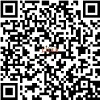(2) Aji Prasetya Wibawa
(3) Bety Masruroh
(4) Vira Setia Ningrum
(5) Eka Nurcahya Ningsih
*corresponding author
AbstractThis study examines the language learning preferences of Indonesians by comparing search trends for popular formal English courses and English learning applications using Google Trends data. The data is visualized and analyzed descriptively, revealing Ruang Guru as the most preferred English language institution in Indonesia. Its popularity is attributed to service promotions, user-friendly websites, and efficient marketing techniques. Simultaneously, Grammarly is observed as the most popular English learning application among Indonesian learners, emphasizing the importance of refining writing skills. A comparison of search results between Grammarly and Ruang Guru highlights Grammarly's dominance and the preference for self-directed and flexible learning options among Indonesians. These findings have significant implications for education policymakers, language application developers, and English course institution managers. The study suggests a need for the formulation of courses that align with the preferences of Indonesian learners, facilitating autonomous and flexible learning experiences. This insight can guide strategic decisions to enhance the effectiveness and relevance of English language education in Indonesia.
KeywordsIndonesia language learners; English language learning; Google Trend
|
DOIhttps://doi.org/10.31763/ijele.v6i2.1352 |
Article metrics10.31763/ijele.v6i2.1352 Abstract views : 417 | PDF views : 84 |
Cite |
Full Text Download Download
|
References
[1] S. Zuparova, A. Shegay, and F. Orazova, “Approaches to learning English as the source of all,†Eur. J. Res. Reflect. Educ. Sci., vol. 8, no. 5, pp. 102–107, 2020.
[2] D. Block, “Social Class in Applied Linguistics,†Annu. Rev. Appl. Linguist., vol. 35, pp. 1–19, Mar. 2015, doi: 10.1017/S0267190514000221.
[3] X. Du, J. Yang, B. Shelton, and J.-L. Hung, “Is learning anytime, anywhere a good strategy for success? Identifying successful spatial-temporal patterns of on-the-job and full-time students,†Inf. Discov. Deliv., vol. 47, no. 4, pp. 173–181, Nov. 2019, doi: 10.1108/IDD-09-2019-0060.
[4] A. Murphy, H. Farley, M. Lane, A. Hafeez-Baig, and B. Carter, “Mobile learning anytime, anywhere: What are our students doing?,†Australas. J. Inf. Syst., vol. 18, no. 3, Nov. 2014, doi: 10.3127/ajis.v18i3.1098.
[5] N. W. S. Adnyani, “Overview of english language proficiency index in efl-countries,†Yavana Bhasha J. English Lang. Educ., vol. 5, no. 2, pp. 186–199, Aug. 2022, doi: 10.25078/yb.v5i2.959.
[6] S. Afdian and D. Wahyuni, “Indonesian senior high school students’ attitude towards literature in English,†J. English Lang. Teach., vol. 9, no. 1, p. 160, Mar. 2020, doi: 10.24036/jelt.v9i1.107889.
[7] R. Morganna, S. Sumardi, and S. S. Tarjana, “Tertiary English students’ attitude towards intercultural language learning,†Indones. J. Appl. Linguist., vol. 9, no. 3, pp. 657–665, Feb. 2020, doi: 10.17509/ijal.v9i3.23216.
[8] H. Panggabean, “Problematic Approach to English Learning and Teaching: A Case in Indonesia,†English Lang. Teach., vol. 8, no. 3, Feb. 2015, doi: 10.5539/elt.v8n3p35.
[9] E. A. A. Sikki, A. Rahman, A. Hamra, and N. Noni, “The competence of primary school English teachers in Indonesia,†J. Educ. Pract., vol. 4, no. 11, pp. 139–145, 2013.
[10] S.-P. Jun, H. S. Yoo, and S. Choi, “Ten years of research change using Google Trends: From the perspective of big data utilizations and applications,†Technol. Forecast. Soc. Change, vol. 130, pp. 69–87, May 2018, doi: 10.1016/j.techfore.2017.11.009.
[11] D. Madsen, “Using google trends in management fashion research: a short note,†Eur. J. Manag., vol. 16, no. 1, pp. 111–122, Mar. 2016, doi: 10.18374/EJM-16-1.9.
[12] B. Masruroh, I. Deffinika, V. S. Ningrum, P. Anugrah, and F. Maysa, “Analisis Google Trends: Akulturasi budaya melalui musik Kpop di Indonesia,†J. Integr. dan Harmon. Inov. Ilmu-Ilmu Sos., vol. 3, no. 7, pp. 711–716, Jul. 2023, doi: 10.17977/um063v3i7p711-716.
[13] E. Hargreaves, M. Mahgoub, and D. Elhawary, “An investigation into improved primary school English language learning in the traditional classroom: pupils explain what children and teachers can do to make progress,†An Egypt. case study. ELT Res. Pap., vol. 17, pp. 1–19, 2016.
[14] T. L. K. Huong, “EFL Vietnamese student engagement in face-to-face learning environment,†Eur. J. Educ. Stud., vol. 9, no. 12, Dec. 2022, doi: 10.46827/ejes.v9i12.4604.
[15] N. Arnesti and A. Hamid, “Penggunaan media pembelajaran online–offline dan komunikasi interpersonal terhadap hasil belajar bahasa inggris,†J. Teknol. Inf. Komun. dalam Pendidik., vol. 2, no. 1, pp. 85–99, 2015. doi: 10.24114/jtikp.v2i1.3284
[16] A. Anggrawan, “Analisis Deskriptif Hasil Belajar Pembelajaran Tatap Muka dan Pembelajaran Online Menurut Gaya Belajar Mahasiswa,†MATRIK J. Manajemen, Tek. Inform. dan Rekayasa Komput., vol. 18, no. 2, pp. 339–346, 2019, doi: 10.30812/matrik.v18i2.411.
[17] D. S. Adzkiya and M. Suryaman, “Penggunaan Media Pembelajaran Google Site dalam Pembelajaran Bahasa Inggris Kelas V SD,†Educ. J. Teknol. Pendidik., vol. 6, no. 2, p. 20, Jul. 2021, doi: 10.32832/educate.v6i2.4891.
[18] M. N. Rohim, “Marketing Strategy for Educational Services,†in Proceedings of the 3rd International Conference on Education Innovation (ICEI 2019), 2019, doi: 10.2991/icei-19.2019.61.
[19] S.-G. KIM, “The marketing model applying the concepts of educational psychology in the private educational service sector,†J. Distrib. Sci., vol. 18, no. 11, pp. 15–22, 2020.
[20] T. W. V. Anabel and D. C. Simanjuntak, “Obtaining preferences from a hybrid learning system to promote English-speaking ability through focus group discussion,†J. Lang. Lang. Teach., vol. 10, no. 2, p. 118, Apr. 2022, doi: 10.33394/jollt.v10i2.4994.
[21] P. Munday, “Duolingo . Gamified learning through translation,†J. Spanish Lang. Teach., vol. 4, no. 2, pp. 194–198, Jul. 2017, doi: 10.1080/23247797.2017.1396071.
[22] L. Astarilla, “University students’ perception towards the use of Duolingo application in learning English,†Pros. CELSciTech, vol. 3, pp. 1–9, 2018. doi: 10.1080/23247797.2017.1396071
[23] M. L. Armanda, A. F. Nugraheni, A. Wulansari, and A. Imron, “‘Grammarly’ as English Writing Assistant from EFL Students’ Perspective,†English Educ. English Teach. Res., vol. 7, no. 2, pp. 128–137, Oct. 2022, doi: 10.29407/jetar.v7i2.17988.
[24] U. Dewi, “Grammarly as Automated Writing Evaluation: Its Effectiveness from EFL Students’ Perceptions,†Ling. Cult., vol. 16, no. 2, pp. 155–161, May 2023, doi: 10.21512/lc.v16i2.8315.
[25] I. A. Dragomir and B.-O. Niculescu, “Different Approaches to Developing Writing Skills,†L. Forces Acad. Rev., vol. 25, no. 3, pp. 201–206, Sep. 2020, doi: 10.2478/raft-2020-0024.
[26] L. S. Tortorelli, H. K. Gerde, R. Rohloff, and G. E. Bingham, “Ready, Set, Write: Early Learning Standards for Writing in the Common Core Era,†Read. Res. Q., vol. 57, no. 2, pp. 729–752, Apr. 2022, doi: 10.1002/rrq.436.
[27] D. R. Seals, “To grant you an edge. Part 3. Considerations for writing competitive research career development proposals in the biomedical sciences,†J. Appl. Physiol., vol. 132, no. 6, pp. 1518–1524, Jun. 2022, doi: 10.1152/japplphysiol.00149.2022.
[28] A. Cunha, A. Mateus, A. Bruscato, and I. Renda, “Professional English Language Skills for Employability in Portugal,†SAGA J. English Lang. Teach. Appl. Linguist., vol. 4, no. 1, pp. 1–14, Jan. 2023, doi: 10.21460/saga.2023.41.144.
Refbacks
- There are currently no refbacks.
Copyright (c) 2024 Lisa Ramadhani Harianti, Aji Prasetya Wibawa, Bety Masruroh, Vira Setia Ningrum, Eka Nurcahya Ningsih

This work is licensed under a Creative Commons Attribution-ShareAlike 4.0 International License.

International Journal of Education and Learning
ISSNÂ 2684-9240
Published by Association for Scientific Computing Electronics and Engineering (ASCEE)
W : http://pubs2.ascee.org/index.php/ijele
E : zalik@ascee.org

This work is licensed under a Creative Commons Attribution-ShareAlike 4.0 International License.






















